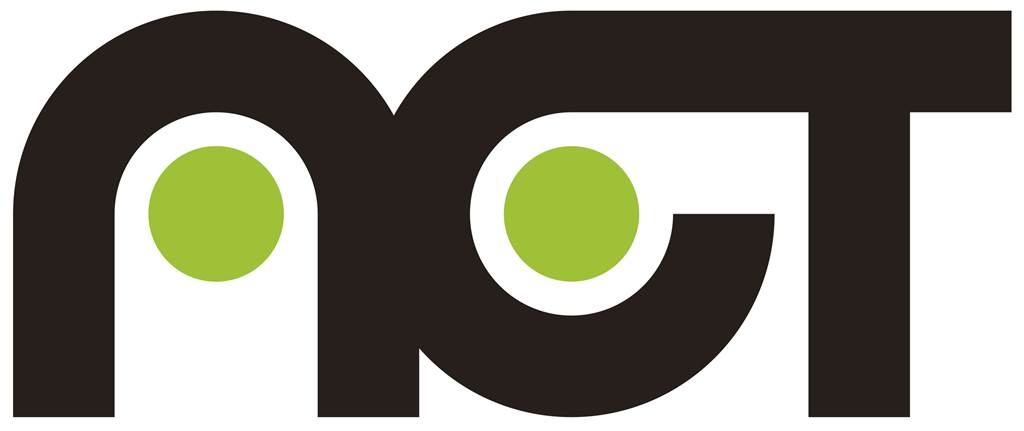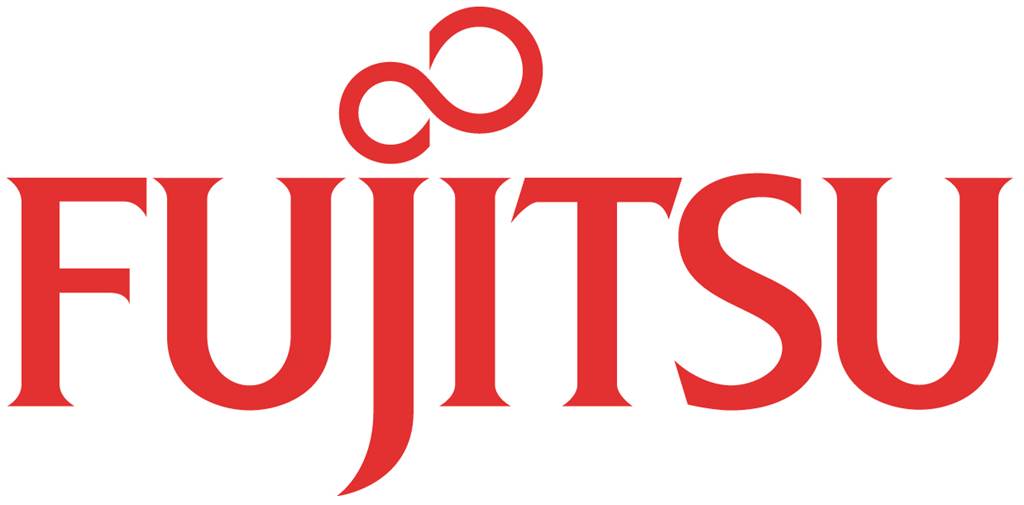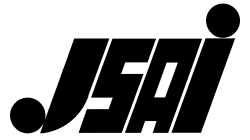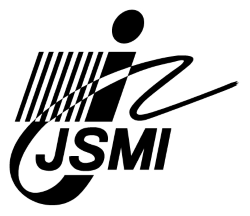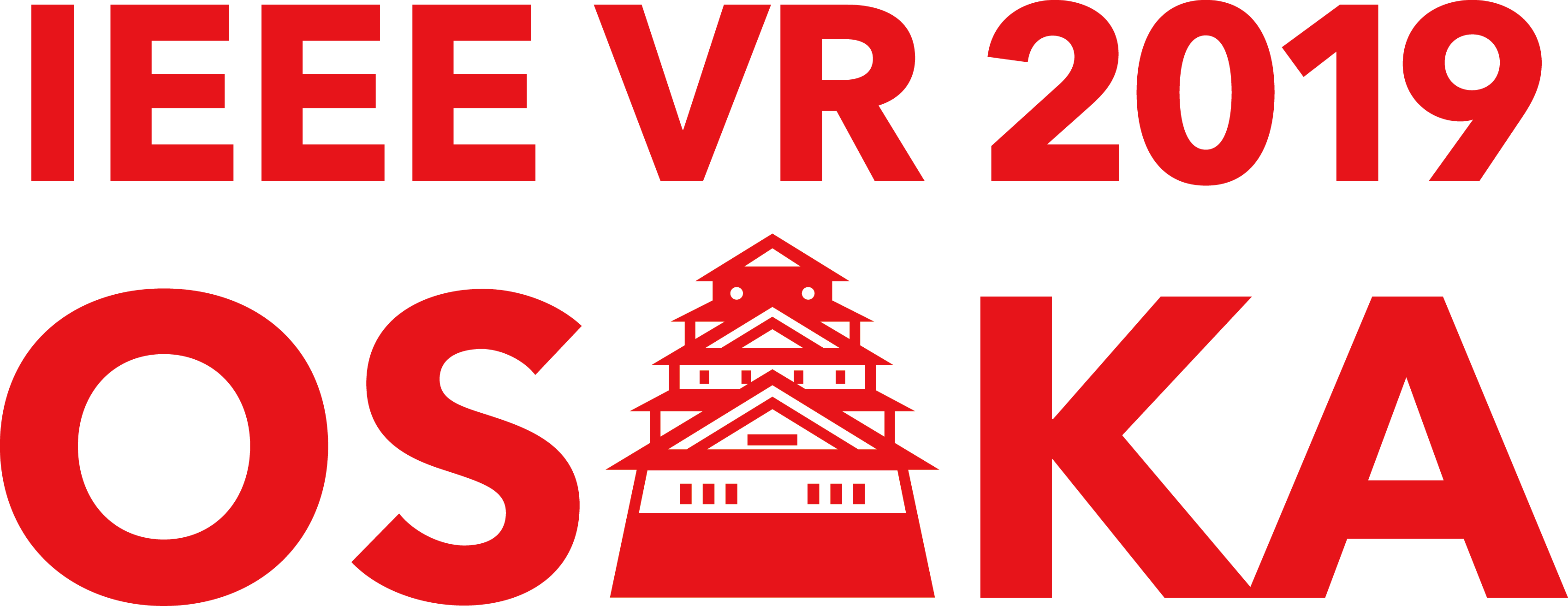
March 23rd - 27th

March 23rd - 27th
Sponsors
Diamond
Platinum
Gold
Silver
Bronze
Flower / Misc
Exhibitors
Supporters
IEEE Kansai Section
Society for Information Display Japan Chapter
The Visualization Society of Japan
The Robotics Society of Japan
Japan Society for Graphic Science
The Japan Society of Mechanical Engineers
Japanese Society for Medical and Biological Engineering
The Society of Instrument and Control Engineers
The Institute of Electronics, Information and Communication Engineers
Japan Ergonomics Society
Exhibitors and Supporters
3DUI Contest - Call for Participation
IEEE VR 2019: the 26th IEEE Conference on Virtual Reality and 3D User Interfaces
March 23-27, 2019, Osaka, Japan
http://ieeevr.org/2019/
Important Dates
- December 1, 2018: Contest registration
- January 5, 2019: Submission of two-page abstract and video
- January 15, 2019: Notification of which entries are accepted
- January 31, 2019: Camera ready version
Overview
This year, the IEEE VR 2019 will hold the 10th annual 3DUI Contest. It is open to anyone interested in 3D User Interfaces (3DUIs) and Virtual Reality, from researchers to students, enthusiasts, and professionals. The purpose of the contest is to stimulate innovative and creative solutions to challenging 3DUI problems. The theme of this year is “Escape Room in Mixed Reality”. Tasks should involve Passive Haptics as part of their 3DUI design. In a passive haptics scenario, material properties of real objects are enhanced with virtual behaviors in the mixed reality scenario where they are surrounded. Although it is not required, you can embed your interactions inside an escape room as scenario, which we believe it could make them fun and more interesting to juries. Selected contestants will be required to provide a live demonstration of their solutions onsite. For the demonstration track, contestants must bring their own mixed reality hardware (VR, AR, or anything in between), but can choose to use any type of hardware. A grand winner will be selected by juries at the conference.
Eligibility
The 3DUI Contest is open to anyone interested in 3DUIs—researchers, students, hobbyists, professionals, or anyone else. Requirements for the selection and presentation are specified below.
Problem Description and Task
This year, we want you to develop 3DUIs using passive haptics. You should provide the physical props you require for your 3DUI for the presentation in Osaka. Your 3DUIs should have at least five of the following features:
- Rotation. You should be able to rotate objects such as knobs.
- Insertion / Plug in. You should be able to put thing inside others, such as a key in its lock. This could be combined with rotations, so the right key allows to open the right lock.
- Pressing. You should be able to press elements, such as buttons.
- Pulling and pushing. You should be able to grab things and pull or push them, such as shelves or doors.
- Changes in textures and materials. You should be able to change texture and materials from objects, such as changing appearance of objects when they are lit.
- Join. You should be able to join two or more objects, so they become one, similar to when you construct a LEGO figure
- Pressure/Squeeze. You should be able to squeeze the object or experience the pressure.
- Identify the Attributes of the Objects. You should be able to feel or identify the Geometry, Weight, Temperature, Olfaction, Gustation, OR other attributes of the objects.
On top of the features you select from the previous list, all scenarios should include the following:
- Move around your scenario what is necessary in order to try all interactions.
- An indication when all interactions have been tried, or when the escape room has been solved.
Rules
The submitted solutions have to fulfill the following rules to be considered for acceptance and presentation during IEEE VR 2019:
- Submissions have to present a 3DUI solution for the above features
- The submitted material should show the 3DUI using passive haptics and how this 3DUI solves at least five features specified above.
- More tasks or unlisted tasks are encouraged. It will be considered in the evaluation phase.
- The developed 3DUI should
- … require spatial interaction,
- … be innovative,
- … provide high usability, and
- … be aesthetically pleasing.
- For the demonstration purposes, an scenario, which could include the selected tasks, could be an option. It could potentially make the transition among the selected tasks smoother. An Escape Room Game is an example. Other scenario in any manner can also be an option.
Teams
Teams of up to ten people may submit solutions.
Paper
Teams must submit a short paper of two pages, with a description of the solution, details about software developed, a brief description of the closest related work and how your system is novel, and a description of how you iterated upon the design. If your submission is accepted, this paper will be included in the IEEE VR Conference proceedings as two-page extended abstract describing the contest solution, and therefore must be formatted using the IEEE Computer Society format as specified for Call for VR Conference Papers.
Video
Teams will also submit a video that presents the solution to the public, including an explanation of the equipment, software, and interaction techniques used to solve the problem. Additionally, the video should include representative footage of example users as they perform the task. If your submission is accepted, the video will be made publicly available. Videos should have a length of 60-90 seconds and should include the title along with the names and affiliations of the contestants. The submitted file should be a high quality compressed video with a size of no more than 50 MB. We will accept videos in MPEG (.mpg), Quicktime (.mov), and MP4 (.mp4).
Demonstration Track
If your submission is accepted, you will participate in a live demo session at the conference, where you will showcase your work to the IEEE VR community and have a chance to win awards. Since this year’s contest will be judged live at IEEE VR, we will invite various judges from the community to judge your solution. The judging criteria are novelty, usability, and aesthetics. We will further offer on-site judging for all conference attendees. Contestants are asked to bring their own equipment for demoing their individual solutions during the 3DUI session as part of IEEE VR.
The final score will be the combination of the expert judges’ score (60%) plus the audience scores (40%). A winning team with the highest score will be awarded.
Contest Registration - due December 1, 2018
Teams should register for the contest by December 1, 2018 via email to 3duicontest2019@ieeevr.org with the following information (different to last years): team name, team members with name and affiliation, one contact email, and the used hardware setup.
3DUI Contest Chairs
- Rongkai Guo, Kennesaw State University, USA
- Benjamin Weyers, RWTH Aachen University, Germany
- Kazuki Takashima, Tohoku University, Japan
- Pablo Figueroa, Universidad de los Andes, Colombia
3DUIcontest2019 [at] ieeevr.org























